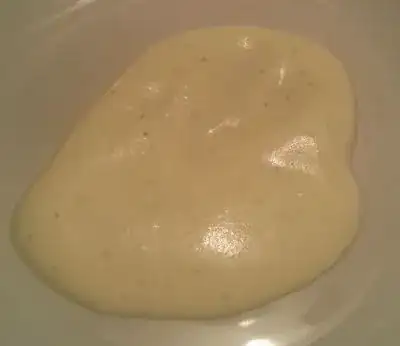When we whip cream by hand in a stainless steel bowl, with a metal whisk, small grey specks, ~0.5-1mm in size, appear in the cream. The specks are squishy and can easily be smeared out. See attached photos:


Googling does not turn up much except similar question at: http://chowhound.chow.com/topics/508107
The specks appear in different stainless steel bowls ("Stainless steel" imprinted on all bowls - no aluminium or other metals involved as far as we can tell).
The same whisk used in a plastic bowl does not produce specks.
The cream is organic, 40% fat (Swedish "Arla EKO"). We cannot detect any strange taste.
It seems probable that the specks come from mechanical wear. But what is it? What could be the cause? Is there something we should know about Stainless steel bowls?